![]()
Germany
South Baden
Teningen
![]()
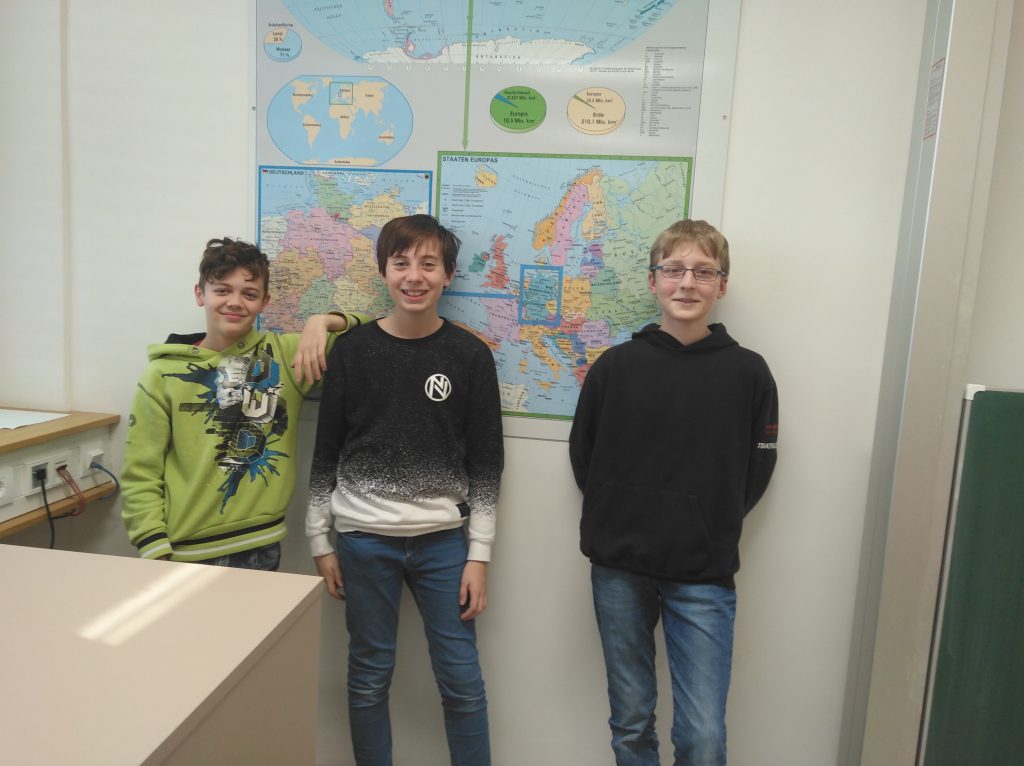
Germany
When we think of travel or holiday destinations, Germany is not the first country that springs to mind. But take a closer look – for Germany has everything that makes other countries so appealing: picture-perfect coastlines on the North and Baltic Seas, magnificent Alpine peaks, top-class theatres and world-class museums, beautiful countryside (much of it forested) and interesting people.
It offers unique cultural attractions for young and old alike – and not only in the four major cities of Berlin, Hamburg, Cologne and Munich, with their million-strong populations. Visitors love its smaller towns, many with well-known universities.
The most famous and surely one of the most romantic is Heidelberg, situated on the river Neckar.
South Baden
And that brings us to Baden-Württemberg. All that we have said about Germany is true of this region as well. We need only think of the central uplands – the Mittelgebirge – or enchanting Lake Constance on the border with Switzerland and Austria. Stuttgart, the regional capital, may not be a magnet for tourists, but its world-class opera and ballet make it a cultural highlight. Within Germany’s federal structure, Baden-Württemberg is one of sixteen constituent states.
And it applies also to the South Baden region in the south-west, albeit on a smaller scale. The Black Forest is a popular destination in winter and summer alike, especially for skiers and hikers. At almost 1500 metres, the Feldberg is the highest peak in Germany’s central uplands. Even travellers with little opportunity to take time out of their busy lives will find plenty of places where they can relax. Small and beautiful are the keywords here. Freiburg im Breisgau is well-known as one of South Baden’s traditional university towns, attracting students from all over the world. The region shares a border with France and Switzerland, and its location in this triangle simply adds to its charm. It is easy to take a quick trip across the border to Strasbourg, seat of the European Parliament, or to Colmar or Basle.
Teningen
Teningen municipality in the district of Emmendingen is located on the river Elz in the Upper Rhine Plain between the southern edge of the Black Forest and the Kaiserstuhl hills. The region is famous for its wine, growing top-quality Burgunder grapes: pinot noir, pinot blanc and pinot gris. Teningen itself has a population of 12,000. It is home to the bilingual Theodor Frank School, which publishes this smart travel guide as part of the EU-funded Erasmus project. Teningen has a strong industrial base (with almost 6000 socially insured jobs) as well as sustainability projects, including a local heating supply to some neighbourhoods.
The provider, Nahwärmeversorgung Teningen GmbH, operates heating networks and generation facilities using energy sources such as biogas and wood pellets. This green solution means that much less energy is used at the household level, reducing emissions of carbon dioxide (CO2) and other greenhouse gases into the atmosphere. Here too, efforts are being made to stop climate change. And on that note, Germany as a whole already generates more than 40 per cent of its electricity from renewable sources – water, wind and solar (2020 figure).
Following a decision by the local council, Teningen is poised to become a Fairtrade Town in 2020. The award goes to municipalities which show a high level of commitment to fair trade. It promotes fair and sustainable consumption and involves the whole community. Many of the social and environmental challenges facing the world today have to do with our day-to-day behaviour as consumers. Fair and sustainable consumption can initiate positive change. Raising awareness of the need to “think global – act local” is an important task for educators.
Fair trade is an institutional arrangement whereby producers receive a guaranteed minimum price for their goods. The aim is to ensure that producers benefit from higher and more reliable incomes than in conventional trade – even when market prices are low. Social standards also play a role.
This website provides information about other interesting destinations in South Baden. Enjoy exploring!
![]()
Finland
Päijänne Tavastia
Lahti
![]()
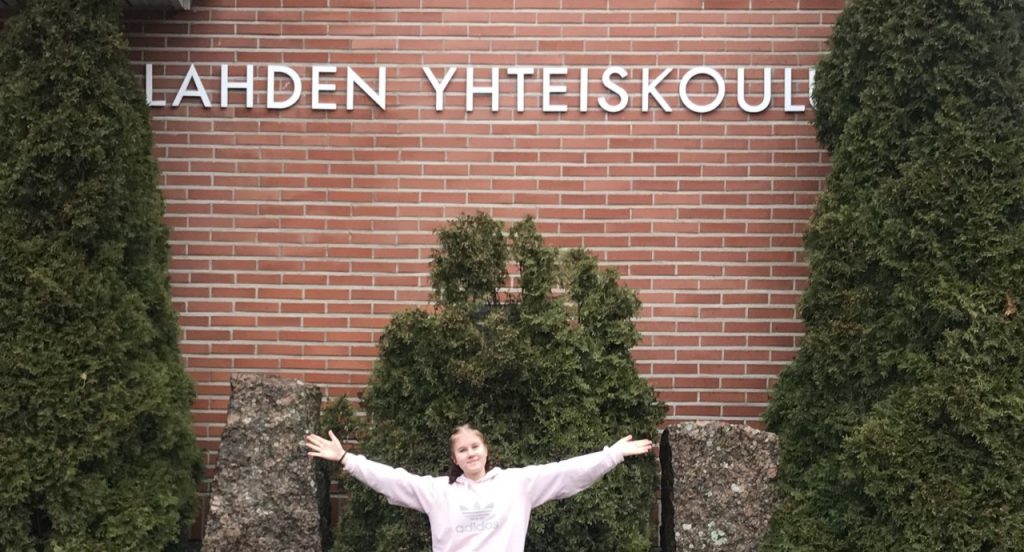
Finland
Finland, our lovely country in the North. Also known as the Land of a Thousand Lakes, because we have over 168 000 lakes and 78% of our area is covered in forest.
When it comes to tourism; most people come to seek snow and cold weather. Far North in Lapland there are fells where you can go snowboarding, downhill skiing and skating. One of the most remarkable features is Aurora Borealis known also as the North Lights.
Big part of Finland’s culture is sauna and in fact we have 3,4 million saunas. Also we are known for our traditional foods like Karelian pasties and Finnish dessert called Mämmi.
Päijänne Tavastia
Regional Council of Päijänne Tavastia (Päijät-Häme) is one of the 19 Finnish Regional Councils. The region is named after Päijänne, the second largest lake in Finland. There are nine municipalities in the region: Asikkala, Hartola, Heinola, Hollola, Kärkölä, Lahti, Orimattila, Padasjoki and Sysmä. The amount of people living in Päijänne Tavastia is about 200 000. The distance between the capital town Helsinki and Päijänne Tavastia is approximately 100 kilometers, so it takes about one and a half hours by car.
Lahti
The population of Lahti is about 120 000. It is located in southern Finland. The city is the 8th largest town in Finland. Lahti is known for its Orchestra hall (Sibelius hall). It is named after the most known Finnish composer Jean Sibelius. There are three ski jump towers in Lahti sports centre. The highest one is 80 meters tall and it was opened in 1972. Lahti was selected as the European green capital for 2021. Lahti is a winter sports city. The most famous event is Lahti ski games.
![]()
Iceland
The Capital Area
Gardabaer
Gardaskoli
![]()
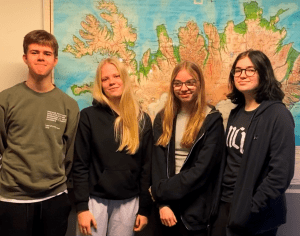
Iceland
Iceland is a small Nordic island in Europe, known for its landscape and sustainable energy. Most of the people living in Iceland live near the capital or around 65% of the population. Iceland has many volcanoes, hot springs, waterfalls, and glaciers, many of which are used as energy sources. Iceland is about 103,000 square kilometres with a population of around 350.000. There are 2.3 million tourists that visit Iceland every year which is more than 6 times the population. The main tourist attractions include the Golden Circle, the Blue lagoon and Hallgrímskirkja. The tap water in Iceland is known for being clear, pure, and untainted with chemicals and minerals. In Iceland, the summers are short, cool, and mostly cloudy. It’s bright all day even at night. The winters are long, moderately cold, wet, windy, and overcast. Based on the tourism score, the best time of year to visit Reykjavík for warm-weather activities is from early July to mid-August. Northern lights, also known as Aurora Borealis, are very common in Iceland especially in the winter, when it is dark outside almost 18 hours a day.
The Capital Area
The capital region (höfuðborgarsvæðið) is a region in southwestern Iceland that comprises the capital Reykjavík and six other towns around it, such as Kópavogur, Hafnarfjörður, Garðabær, Mosfellsbær, Seltjarnarnes, and Kjósarhreppur. Reykjavík is the most populated with over 130.000 inhabitants who live in about 270 square kilometers area Kjósarhreppur however, is the least populated with only about 250 people living there in an area of 280 square kilometers.
Garðabær is the fourth most populated town in the capital region with about
17.000 inhabitants who live in an area of 74,4 square kilometers. The president of Iceland lives in Álftanes which is a part of Garðabær.
The area is powered by using geothermal energy and hydropower.
About 85% of the total primary energy supply in Iceland is derived from domestically produced renewable energy sources. This is the highest share of renewable energy in any national energy budget.
Iceland’s main energy source is renewable energy which provides 100% of electricity, with about 73% coming from hydropower and 27% from geothermal power. Most of the hydropower plants are owned by Landsvirkjun (the National Power Company) which is the main supplier of electricity in Iceland.
The capital region offers many exciting activities for example Nauthólsvík, which is a golden man-made beach within walking distance from downtown Reykjavík. The beach has a geothermally heated ocean, hot tubs, outdoor showers and barbecueing facilities which are great for friends and family. On hot summer days, you will find the beach packed with sun-starved Icelanders looking to soak up every ounce of every ray of sun.
Gardabaer
Garðabær is a small town in the capital area of Iceland and has a population of around 17.000 (2020). Garðabær or Garðahreppur became a district in 1878 including Álftanes, the district where the president of Iceland lives. Álftanes used to be a small town right next to Garðabær but in 2012 Álftanes became a part of Garðabær. The current mayor of Garðabær is Gunnar Einarsson.
There are eight elementary schools in Garðabær, teaching grades 1-10. Two of those schools are privately run. There is also an upper secondary school called Fjölbrautarskólinn í Garðabæ or FG for short, Fjölbrautarskóli Garðabæjar is available to all students across the country. We have a public library located in Garðatorg where kids and adults can borrow books.
Garðabær’s sports team is called Stjarnan (The star). Stjarnan is a big team and has a lot of sports including gymnastics, handball, football, swimming, volleyball, basketball and Olympic weightlifting
There are a few things you can do in Garðabær including frisbee golfing, normal golfing, swimming in our local swimming pools, go for Ice cream and go for a hike in Heiðmörk and around the lake Vífilstaðavatn.
In the summer teenagers who live in Garðabær are offered summer jobs for teens at the age of 13-16, the jobs include local gardening, horseback riding lessons for younger children, musical theatre course for small kids, handball and football courses, and a scouts course. The teens help giving lessons to children, do local gardening and more. You get paid hourly, the older you are the higher your income is.
Gardaskoli

Garðaskóli is a school for students from 13-16 years old in a town called Garðabær which is located near Reykjavík, the capital of Iceland.
Garðaskóli prioritizes in having a good atmosphere, teaching their students to be responsible as well as prepare them for further education. Students are given a lot of freedom with their time and education, which challenges them to take more responsibility than they have ever had to as students must be on top of what classes and what homework they have.
The compulsory subjects in Garðaskóli are math, Icelandic, English, Danish, gym and swimming, social studies, and natural science. In social studies, students learn geography, history, sociology, and more. In natural science, students learn biology, chemistry, physics, and so on.
Garðaskóli has many teachers and other staff. Every teacher has their own subject to teach, and they only teach classes about their subject except for some electives. Most teachers have their own class that they supervise. The teachers meet their supervisory students at least every day for 20 minutes and once a week for 55 minutes. Every teacher uses Inna, which is an online program that the students use to view their homework, classes, grades, and more. The teachers use Inna to give students information about their classes and so on.
Garðaskóli is different from other schools, with the same age groups, because Garðaskóli has electives, which are normally only for higher educational schools. Garðaskóli has around 40 electives to choose from in the 9th and 10th grades but changes may occur each year. Students choose 8 electives they are interested in and out of those 8, they get 2-3. The electives cover many areas of interest. Arts and crafts are one of the most popular to choose from like woodwork, textile, art, cooking and baking, and music. Other popular electives are French, astronomy, programming, psychology, gymnastics and movie studies.
Garðaskóli starts in 8th grade and it is quite different from 9th and 10th grade. Starting 8th grade is very exciting because everything is new and the system is different from what you are used to. In 8th grade, you are always with your class consisting of the same teenagers who share the same supervisory teacher. You share the same schedule with everyone in your class. That means that you are always with the same people in each class, but a different teacher. In 8th grade, you have no electives but you have compulsory arts and crafts, such as woodwork, cooking, textile and more.
9th and 10th grades are different from the 8th. Each student has their own timetable. Kind of like high school in America. From grades 9th to 10th, students are divided into three different groups, in Icelandic, English, and math, based on their abilities. This can be good for those who need a little more help or those who learn fast. In the most advanced group, students can get credits for upper-secondary schools.
Garðaskóli has two guidance counsellors. They help students plan their studies and prepare for their future as well as they talk to the students about personal matters.
Garðaskóli has a social centre, called Garðalundur, that organizes all kinds of activities. The biggest events are the school dances, like the rave-ball, a prom-like event at the end of the school year, the girls-night, the school musical and more.
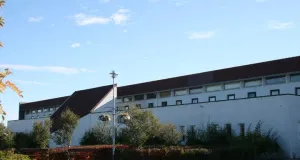
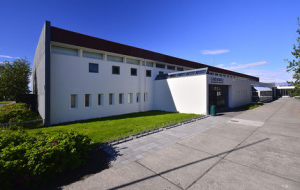
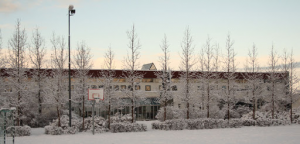
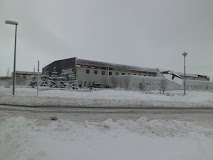
![]()
Italy
Apulia
Bari
![]()
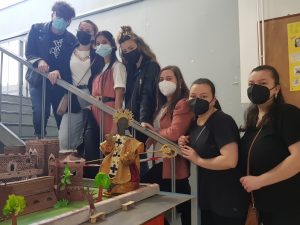
Italy
There are at least a hundred different reasons why one should visit Italy. The country is divided into 20 Regions. Every region is distinct and has its own charm, attractions, traditions, and cuisines, making it an ideal destination for all. There are plenty of things to experience and tons of places to see; one trip certainly will not be enough.
History played a key role in shaping Italy. Rome was the capital of the once-mighty Roman Empire and continues to be the political centre of the country.
Italy can be considered as the cradle of arts: it is home to more World Heritage Sites than any other nation in the world. These sites are culturally important and valued according to UNESCO.
Italian cities are among the world’s oldest cities and urban planning. Apart from Rome, other Italian cities such as Milan, Venice, Genoa, Naples, Florence, Cagliari, Palermo, Livorno, Siena, Bari, etc. are filled with rich cultural heritage and character.
Italian cities are charming, but the real treasures of this beautiful country are its villages. Tuscany’s most classic San Gimignano, the captivating town of Matera (2019 European Capital of Culture), the Apulian jewels Polignano and Alberobello, the list is endless.
The “Bel Paese” (Beautiful Country) is also famous for its wine, as well as its food. Some foods are different between regions. Famous dishes include various types of pasta, pizza, and grapes. Olives and olive oil are much used.
Italy is a boot-shaped peninsula that boasts the longest coastline in Europe, being washed by the waters of five seas: Mediterranean, Adriatic, Ionian, Tyrrhenian, and Ligurian. Almost all of the 20 Italian regions, except Umbria, have access to the sea. The beaches differ from one region to another and can meet all demands and satisfy all tastes.
At the “heel” of the “boot” is the Apulia Region which will be explored in this guide. Hope you will love it!
Apulia
Apulia: Where Sea and Land Meet
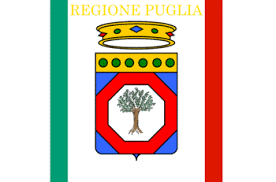 A land of sea, hills and endless plains, the Apulia region attracts visitors not only for its amazing coastline but also for its art cities and historical villages, where old religious traditions still live untouched, its countryside “masserie” (farms) immersed in olive groves and its farm products which tell of unique ancient flavours. Apulia is always worth a trip, for many reasons.
A land of sea, hills and endless plains, the Apulia region attracts visitors not only for its amazing coastline but also for its art cities and historical villages, where old religious traditions still live untouched, its countryside “masserie” (farms) immersed in olive groves and its farm products which tell of unique ancient flavours. Apulia is always worth a trip, for many reasons.
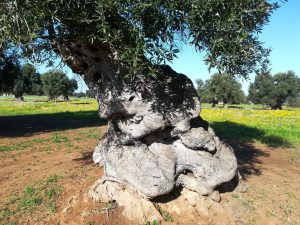
It is a perfect destination for sustainable tourism, awarded by National Geographic because it “boasts the best of southern Italy: the peace, the traditions, the beauty. Unconquered”. It is a land still very tied to its past and traditions and it does its best to preserve the onsite natural, artistic, and cultural resources.
Apulia, Puglia in Italian, is in the southern peninsular section of Italy, bordering the Adriatic Sea to the east, the Ionian Sea to the southeast, and the Strait of Otranto and Gulf of Taranto to the south. Its coastline is longer than that of any other mainland Italian region. In the north, the Gargano promontory extends out into the Adriatic like a “spur”, while in the south, the Salento peninsula forms the “heel” of Italy’s “boot”.
The region has protected areas (Coastal Dunes from Torre Canne to Torre San Leonardo, Lama Balice, WWF Oasis Le Cesine, Margherita di Savoia Saltworks etc.) marine reserves (Torre Guaceto, Tremiti Islands, Porto Cesareo), and a unique landscape. It is home to two national parks, the Alta Murgia National Park and Gargano National Park.
Apulia is also one of the richest archaeological regions in Italy. Many castles were built in the area by the Norman Emperor Frederick II, including Castel del Monte, called the “Crown of Apulia”.Medieval pilgrims left cave shrines frescoed with antique saints. On their way to the boats, the Crusaders built chapels dedicating their quests to the Virgin Mary.
Apulia has a unique culture amalgamated from centuries as a Mediterranean melting pot. The region has variously been part of Magna Graecia (Greater Greece), viciously fought over by the Romans and Carthaginians, a vassal state of Sicily, and a bastion of Frederick II’s medieval Norman Empire.
All over the region, there are also many festivals, religious and folkloristic traditions that relive all year long in a packed schedule of events.
In Puglia, the landscape is varied and mixed as well as the activities, dynamic or relaxing, you can engage in. This enchanting region, therefore, provides the opportunity of enjoying different kinds of tourism such as rural, food, wellness, cultural, eco-friendly.
consectetur adipiscing elit. Ut elit tellus, luctus nec ullamcorper mattis, pulvinar dapibus leo.
Lorem ipsum dolor sit amet, consectetur adipiscing elit. Ut elit tellus, luctus nec ullamcorper mattis, pulvinar dapibus leo.
Bari
“If Paris had the sea it would be a little Bari”. As the saying goes, “Baresi”, the native people, are proud of their enchanting hometown. However, the busy port city of Bari has also much to charm the tourists who pass through it on their way to Greece or the eastern Adriatic.
Bari, from Latin Barium, is the capital city of the Apulia Region, on the Adriatic Sea, in southern Italy. It is the second most important commercial, industrial, and economic centre in Southern Italy after Naples, a port and university city, as well as the city of Saint Nicholas. The city itself has a population of about 320,257 inhabitants, over 116 square kilometers.
Bari is made up of four different urban sections: The Old Town (see Bari Vecchia Destination) in the North, the Murat quarter in the South, the modern residential areas, and the suburbs.
The Murat quarter erected in 1816 by Joachim Murat ( Marshal of the Empire, and King of Naples during the reign of Napoleon) is laid out on a rectangular grid-plan with the Italian longest promenade on the sea and the major shopping district. Here many buildings are designed in Liberty, “Umbertino”, or “Littorio” style (architecture style used during the fascism time).
Modern residential areas, surrounding the Centre of Bari, were built during the 1960s and 1970s replacing the old suburbs. In this part of the Town De Lilla High School has its headquarter. De Lilla is a Vocational School for Social and Health Care which contributed to this Smart Travel Guide within an Erasmus+ project Co-funded by the European Union.
The contemporary outer suburbs have been in rapid development since the ‘90s.
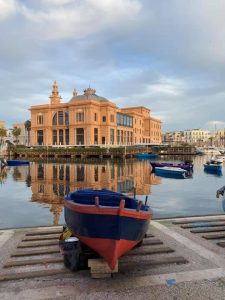
Bari is also famous for its numerous theatres. The oldest theatre in the city is Niccolò Piccinni Municipal Theatre which was inaugurated in1854. At the harbour end of Corso Vittorio Emanuele II is the art-nouveau style Margherita Theater, resting on detached pillars well-founded in water. It was inaugurated in 1914 and now it hosts important exhibitions. The most famous theatre in Bari is the Petruzzelli Theatre, the largest private theatre in Europe. Completed in 1903 as an opera house and concert hall, it hosted some Italian and international performing artists, including Luciano Pavarotti, Rudolf Nureyev, Liza Minnelli, and Frank Sinatra.
Bari also hosts the largest international trade fair in the Adriatic region: Fiera del Levante. Held in September, it attracts many exhibitors from the Mediterranean, its trade corridors to the east and beyond.
From a geographical commercial, cultural, and religious point of view, Bari has been considered for ages as the gateway to the Eastern world.
![]()
Spain
Segrià
Lleida
![]()
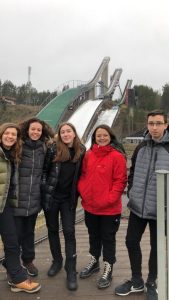
Spain
Catalonia is a nation, constituted as an autonomous community, located in the northeast of Spain. Its population exceeds seven million.
The territory known as Catalonia was a possession of the Roman Empire. Then the Goths and the Muslims passed by until, with the help of Charlemagne, it became an independent territory. In the 12th century, Catalonia was annexed to the Crown of Aragon, which, three centuries later, joined the Crown of Castile. As you can see, we are a small territory with a long history.
Nowadays Catalonia is made up of 947 municipalities of which Barcelona is the capital. We have three official languages: Catalan, Spanish and Occitan.
43% of Catalonia’s land is forested and more than 28% is cultivated.
Our geography is conditioned by the Mediterranean coast: we have 580 kilometres of coastline.
In Catalonia we enjoy a Mediterranean climate, and we also have a great ecological diversity, and a remarkable richness of landscapes, habitats and species. It should be noted that the few more than 30,000 kms are home to eleven natural parks.
Segrià
Located in the west of Catalonia and crossed by the river Segre, the Segrià is an extensive region of fertile land in the orchard and vast dryland plantations.
The city of Lleida is its capital and preserves the remains of all the cultures that have come together. Lleida had the first university in Catalonia, the Estudi General, whose strategic importance made it take part in all the conflicts and events in Catalonia’s history.
The economy of Segrià has traditionally been based on agricultural and livestock activity and the agri-food industry, which finds in the city of Lleida an important service center.
consectetur adipiscing elit. Ut elit tellus, luctus nec ullamcorper mattis, pulvinar dapibus leo.
Lorem ipsum dolor sit amet, consectetur adipiscing elit. Ut elit tellus, luctus nec ullamcorper mattis, pulvinar dapibus leo.
Lleida
The city, with a population of more than 140,000 inhabitants, covers an area of 211.7 kilometres and is one of the largest in Catalonia. Lleida is also the capital of the Segrià region.
There is evidence of settlements in the city of Lleida since at least the Bronze Age, from the VI century BC. Until the Roman conquest, Lleida became the main city of the Ilergetes, an Iberian town called Iltirta. The Romans called it Ilerda and in the days of the emperor Augustus it received the status of municipality.
Of the cultural assets located in the municipality we can highlight the two cathedrals (the Old Cathedral and the New Cathedral), the Paeria Palace or the Old Hospital of Santa Maria. In terms of cultural facilities, we find the Diocesan and Regional Museum, the Municipal Auditorium Enric Granados, the Escorxador Theatre and the Museum of Science and Climate.
Lleida is an important nucleus of services and is the city of reference in terms of hospital care, schools, cultural and leisure activities in a wide area that includes the counties of the province. According to an economic study, the area of commercial influence of Lleida has 497,678 inhabitants.
The city is well connected by roads, motorways and expressways. In terms of public transport, Lleida has an important railway station from with high-speed, long-distance and regional connections. From the city bus station there are several intercity lines that connect it with almost all the towns and cities around it. In terms of internal mobility, Lleida has a 23-line urban bus network. In addition, an airport, located 15 km from the city, has been in operation since 2010.
![]()
Greece
Central Hellas
Eretria
![]()
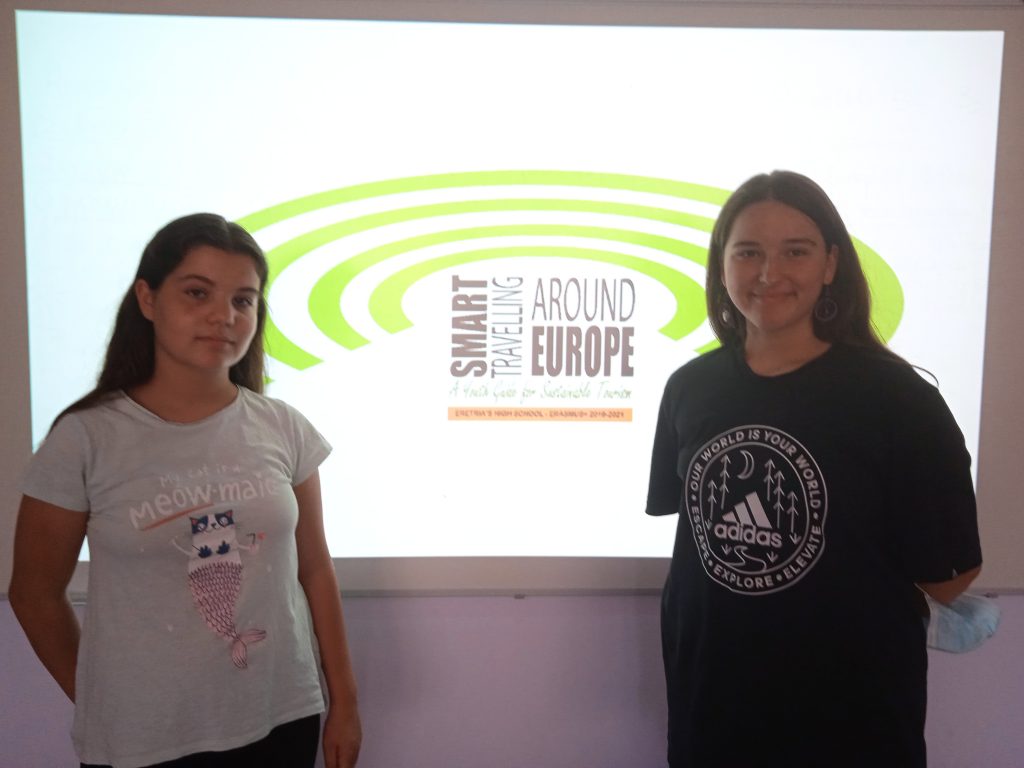
Greece
The original name of Greece is “Hellas”. Through this Erasmus+ program, we take the opportunity to use the original name for our country.
The name “Hellas” comes from the word “El” which means “light” and symbolizes the God Sun and the word ending “-las” which means “stone”, “ground”, “earth”. The word Hellas means the earth of the gods, or throne of the gods.
Hellas is located in southeastern Europe. It borders Albania to the northwest, North Macedonia to the north, Bulgaria to the northeast, and Turkey to the east. It is a country of 2.550 islands. It has coasts in the southeastern Mediterranean, and it is surrounded to the east by the Aegean Sea, to the west by the Ionian Sea and to the south by the Libyan Sea.
Hellas is known all over the world for the bright sun, the beautiful beaches, the dense forests, the steep mountains, the olive groves – as Hellas produces large quantities of olive oil-, the vineyards, – as Hellas produces many varieties of wine – and generally its varied landscape.
But we should not neglect its rich cultural heritage. It is worth mentioning that 18 UNESCO World Heritage Sites are located in Hellas. One of them is the “Parthenon” in Athens. It is the universal symbol, where UNESCO has chosen it in the most absolute way, as an emblem of universality, as an emblem of the common history of the humanity. Its historical monuments reflect the interaction of Hellas with the people of the Middle East and Europe. The fact that democracy, philosophy, drama, tragedy, comedy, the Olympic Games were born in Hellas, Hellenic culture is considered as the foundation of World culture. As the German philosopher and poet B. Goethe used to say, “What is the mind and the heart for man, is Hellas for the universe.“
Hellas became a member of the European Union on January 1, 1981.
Hellas, like any other country, is determined not only by the natural beauties or the historical monuments but also by the customs and its people.
Hellenic cuisine has a great variety. It includes many seafood, grilled meat, fresh vegetables and legumes and the visitor is given the opportunity to taste different flavors from one area to another.
Hellenic traditional dances and music are an important element of Hellenic culture, where it is expressed through the celebrations and festivals that take place mainly in the summer in all regions of Hellas. It is a worth living experience.
The Hellenic hospitality, the Hellenic tradition, the philosophy of the Hellenics and the Hellenic light from which Hellas got its name, are perfectly summarized in the lyrics of the Hellenic poet Andreas Empirikos: “God! This heat is needed for such light to exist! This light is needed, one day to become a common glory, a universal glory, the glory of the Hellenics, that first, I dare say, they, in the world down here, made the fear of death the essence of life.”
Central Hellas
CENTRAL HELLAS (CENTRAL GREECE)
Central Hellas (Greece) is the second largest region in Hellas. It includes the prefectures of Etoloakarnania, Evritania, Fokida, Fthiotida, Viotia, Evia and Attica. The largest cities of Central Hellas (Greece) besides Athens are Chalkida, Agrinio, and Lamia.
Central Hellas (Greece) has a rich history, which is why 1.051 archeological sites and monuments have been recorded. In fact, the archeological site of Delphi and the Monastery of Saint Lucas in Viotia, have been registered as monuments of the UNESCO World Cultural Heritage. Its cultural peculiarity is uniquely reflected in the traditional settlements of the area (Arachova) as well as in the traditional dances, the traditional cuisine, and the traditions of the area.
The region of Central Hellas (Greece) has exceptional natural beauties. Forests, rivers, and lakes compose the uniqueness of the natural environment.
In the area there are many environmental education centers, ski resorts, beaches with blue flags, etc.
In this tourist guide we plan routes of cultural and environmental interest on the island of Evia, Viotia and Attica, highlighting the history and natural wealth of each region.
consectetur adipiscing elit. Ut elit tellus, luctus nec ullamcorper mattis, pulvinar dapibus leo.
Lorem ipsum dolor sit amet, consectetur adipiscing elit. Ut elit tellus, luctus nec ullamcorper mattis, pulvinar dapibus leo.
Eretria
Tab Content

